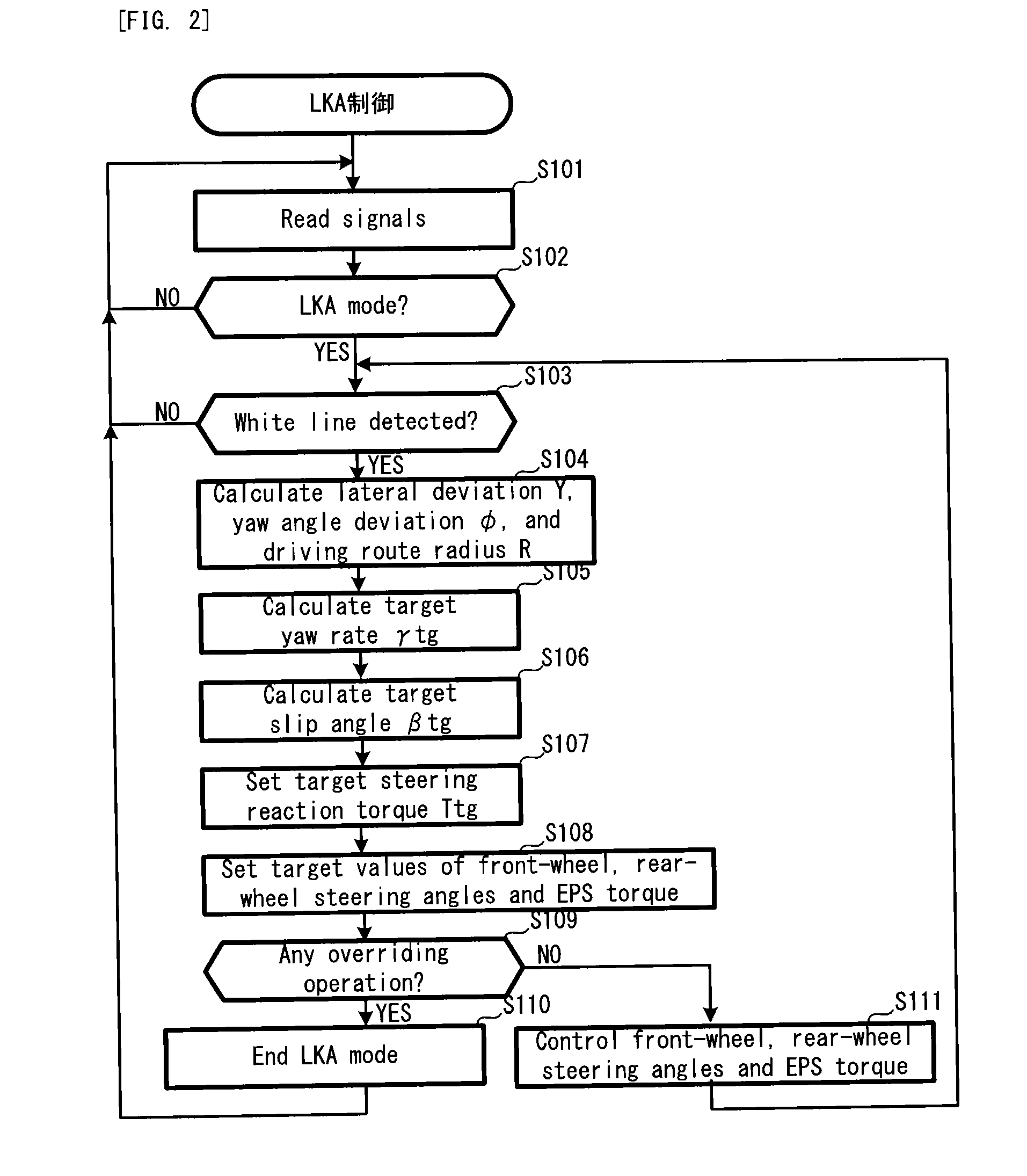Vehicle steering control apparatus
a technology for steering control and vehicles, applied in the direction of steering initiation, instruments, vessel construction, etc., can solve the problems of failure of one electronic control unit and the apparatus disclosed in the patent document 1 that does not provide any solutions, and achieve the effect of increasing driving force, promoting the change of slip angle, and large braking for
- Summary
- Abstract
- Description
- Claims
- Application Information
AI Technical Summary
Benefits of technology
Problems solved by technology
Method used
Image
Examples
first embodiment
1: First Embodiment
1-1: Configuration of Embodiment
[0100]Firstly, with reference to FIG. 1, a configuration of a vehicle 10 in a first embodiment of the present invention will be explained. FIG. 1 is a schematic configuration diagram conceptually illustrating a basic configuration of the vehicle 10.
[0101]In FIG. 1, the vehicle 10 is provided with a left front wheel FL, a right front wheel FR, a left rear wheel RL and a right rear wheel RR. The vehicle 10 is configured to move in a desired direction by a steering angle change of the left front wheel FL and the right front wheel FR, which are steered wheels, and a steering angle change of the left rear wheel RL and the right rear wheel RR.
[0102]The vehicle 10 is provided with an ECU 100, an engine 200, a driving force distributing apparatus 300, a VGRS actuator 400, and EPS actuator 500, an electronic controlled braking system (ECB) 600, a car navigation apparatus 700, and an ARS actuator 800.
[0103]The ECU 100 is provided with a centr...
second embodiment
2: Second Embodiment
[0223]Next, with reference to FIG. 5, fail-safe control in a second embodiment of the present invention will be explained. FIG. 5 is a flowchart illustrating the fail-safe control in the second embodiment. Incidentally, in FIG. 3, portions overlapping those of FIG. 4 will carry the same reference numerals, and the explanation thereof will be omitted as occasion demands.
[0224]In FIG. 5, if the vehicle behavior is stable and if the vehicle 10 is not turning (the step S204: NO), the ECU 100 further determines whether or not a turning degree change rate is large (step S301). More specifically, the ECU 100 determines whether or not a change rate Δγ of the yaw rate γ is greater than or equal to a reference value Δγth. If the turning degree change rate is small (the step S301: NO), the ECU 100 moves the processing to the step S206 and selects the slip angle 13 as the vehicle state quantity. If the turning degree change rate is large (the step S301: YES), the ECU 100 mov...
third embodiment
3: Third Embodiment
[0226]Next, with reference to FIG. 6, fail-safe control in a third embodiment of the present invention will be explained. FIG. 6 is a flowchart illustrating the fail-safe control in the third embodiment. Incidentally, in FIG. 6, portions overlapping those of FIG. 4 will carry the same reference numerals, and the explanation thereof will be omitted as occasion demands.
[0227]In FIG. 6, if the vehicle behavior is stable and if the vehicle 10 is not turning (the step S204: NO), the ECU 100 further determines whether or not a steering state of the vehicle 10 is strong under-steering (step S401). More specifically, the ECU 100 determines whether or not the degree of an outward deviation in the turning of the vehicle 10 with respect to the target driving route in the trajectory following control is greater than or equal to a reference value. The determination as described above can be performed on the basis of the yaw angle deviation φ and the driving route radius R or t...
PUM
 Login to View More
Login to View More Abstract
Description
Claims
Application Information
 Login to View More
Login to View More - R&D
- Intellectual Property
- Life Sciences
- Materials
- Tech Scout
- Unparalleled Data Quality
- Higher Quality Content
- 60% Fewer Hallucinations
Browse by: Latest US Patents, China's latest patents, Technical Efficacy Thesaurus, Application Domain, Technology Topic, Popular Technical Reports.
© 2025 PatSnap. All rights reserved.Legal|Privacy policy|Modern Slavery Act Transparency Statement|Sitemap|About US| Contact US: help@patsnap.com



